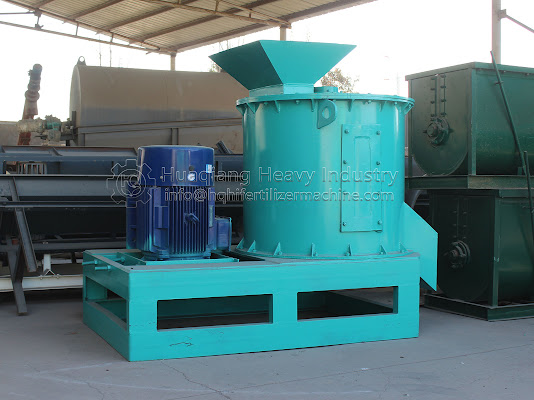Making organic fertilizer from waste bagasse
If the waste bagasse is thrown away directly, it will not only pollute the environment, but also waste resources. Sugarcane bagasse is directly dumped as waste or landfill, which causes serious secondary pollution to the environment and soil. Bagasse can be used as raw material of organic fertilizer production line, reused, and recycled in agriculture as organic fertilizer product. The organic fertilizer made from bagasse can not only be sold as a product in the market, but also meet the requirements of environmental protection and economic development.
2. Mix well and ventilate. The aerobic microorganism plays an important role in the composting and fermentation of bagasse, so the oxygen supply measures should be increased. The equipment such as the compost turner can be used to mix well, turn frequently and ventilate properly. Otherwise, it will cause anaerobic fermentation and produce odor, which will affect the effect.
3. Moisture. The water content of fermentation materials should be controlled at 60-65%. Less water ferments slowly, and more water ventilates poorly, which will lead to "putrefactive bacteria" working and stink.
4. Temperature. The start-up temperature should be above 15℃, and the fermentation temperature should be controlled below 70-75℃.
5. Granular fertilizer processing. The compost which is mature and qualified is further processed into solid particles by fertilizer granulator and supporting equipment. We provide flat die pelleting machine, agitator-tooth drum granulator, rotary drum granulator and other granulator.
Feasibility of bagasse as organic fertilizer
The effective nutrients of plant bagasse are low and the grains are coarse and long. There are many problems when it is used as organic fertilizer substrate alone, such as insufficient nutrition, too thick substrate, large space in the substrate and low water holding rate of the substrate. After fermentation, the substrate shrinks seriously and the fertilizer effect is low, which leads to the extremely unstable cultivation effect and low yield. Therefore, when bagasse is used as the raw material of organic fertilizer fermentation, other types of organic wastes such as chicken manure, cow manure, sheep manure, soybean residue and mushroom residue should be added to meet the needs of composting fermentation. When bagasse is used to make organic fertilizer, a lot of cellulose in bagasse is degraded and the content of organic matter can be greatly increased.Bagasse organic fertilizer production line process
1. Crush the waste bagasse, the finer the particle size is, the better.2. Mix well and ventilate. The aerobic microorganism plays an important role in the composting and fermentation of bagasse, so the oxygen supply measures should be increased. The equipment such as the compost turner can be used to mix well, turn frequently and ventilate properly. Otherwise, it will cause anaerobic fermentation and produce odor, which will affect the effect.
3. Moisture. The water content of fermentation materials should be controlled at 60-65%. Less water ferments slowly, and more water ventilates poorly, which will lead to "putrefactive bacteria" working and stink.
4. Temperature. The start-up temperature should be above 15℃, and the fermentation temperature should be controlled below 70-75℃.
5. Granular fertilizer processing. The compost which is mature and qualified is further processed into solid particles by fertilizer granulator and supporting equipment. We provide flat die pelleting machine, agitator-tooth drum granulator, rotary drum granulator and other granulator.




Comments
Post a Comment